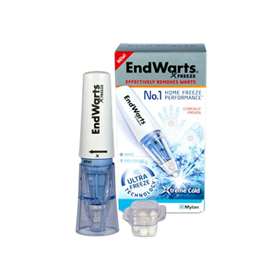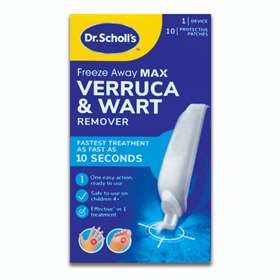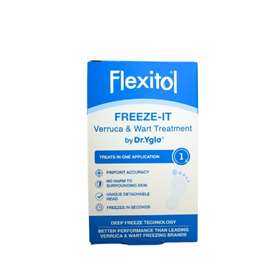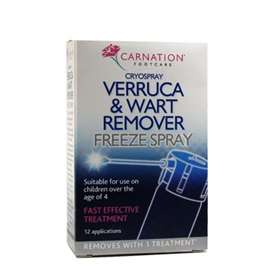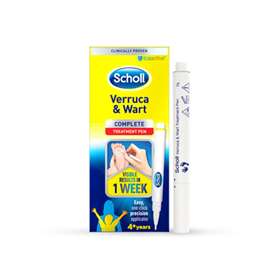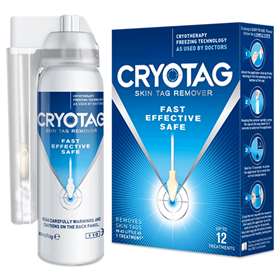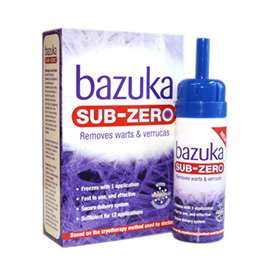EndWarts Freeze Wart Remover Pen is a home treatment that rapidly removes warts on hands, arms and feet. One application is usually enough to remove a wart using EndWart Freeze pen which uses nitrous oxide, a very cold gas that starts at the extremely low temperature of -80℃ to freeze warts during application.
- Up to 7 doses.
- Freeze wart remover.
- Uses nitrous oxide.
- For use on hands, arms and feet.
- Suitable for use on adults and children over 4 years.
Directions of use:
Please ensure you read the instruction leaflet thoroughly before use.
- Activate: Do not remove the cap. Turn the white part one full turning the direction of the arrow until you notice a loud click. (some force is needed) Only before the first use.
- Load: Place EndWarts upright on a table with the transparent cap down. Hold the device with a steady grip. With the other hand push the white part downward for exactly 2 seconds. Pushing for longer will waste doses, pushing shorter reduces the freeze effect.
- Check: Remove the cap and you should see ice vapour, repeat step 1.
- Treat: Immediately press the tip against the wart. 15 seconds on thin skin (hands, fingers, toes sides and top of feet and arms). 40 seconds on thick calloused skin (soles of feet). After use replace lid and store in the refrigerator. the wart will slowly disappear in 14 days if not repeat steps 1,2 and 3.
Hard skin on top of the wart makes freezing more difficult, so to achieve the best results follow these steps:
When treating Verrucas:
Soak the affected area in lukewarm water until the skin is soft.
Gently remove any overlaying skin on inward growing warts on the foot e.g. with a foot file.
Make sure that the wart and surrounding skin are completely dry before treatment.
Do not file the wart itself; it may become tender and will form a new hard surface.
Warning:
Do not use EndWarts Freeze on:
On healthy skin (skin without warts)
On warts located on sensitive skin; take particular care when treating areas of thin skin
If the wart and/or surrounding skin is bleeding or open, irritated, itchy, infected or red
If you are not sure the growth is a common wart, we recommend seeking professional advice
On moles, corns, blisters, other skin defects or anything that might be skin cancer (melanoma)
On liquid filled vesicles on the skin (called molluscum contagiosum) or any other vesicles or blisters.
If pregnant or a nursing mother
On persons with diabetes and/or problems with blood circulation or blood clotting
On multiple warts at the same time if they are located close together. Wait 14 days.

